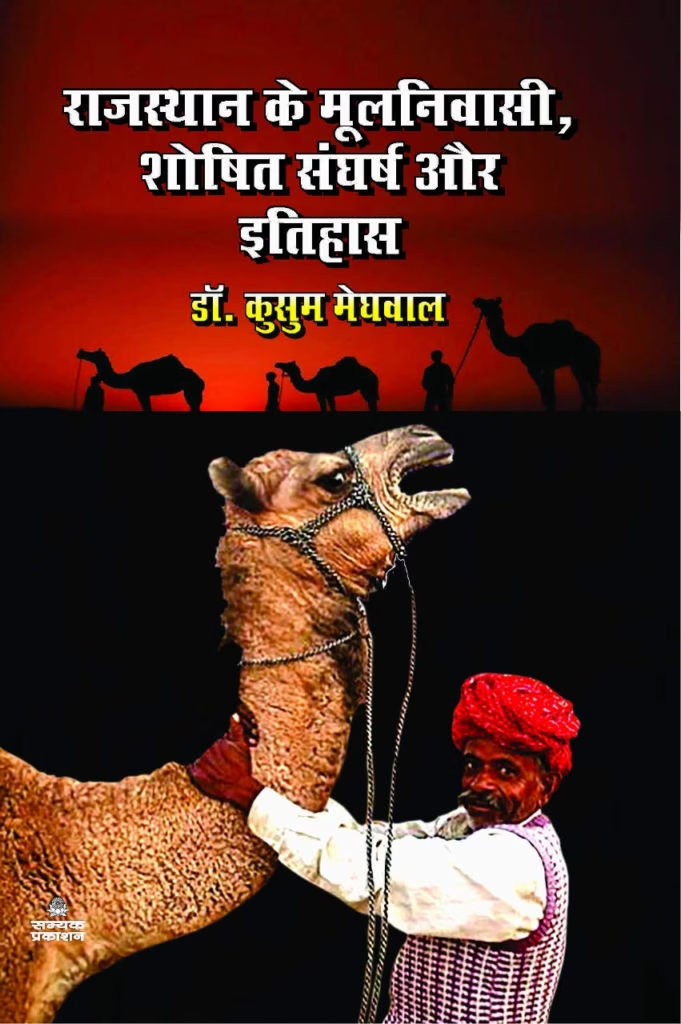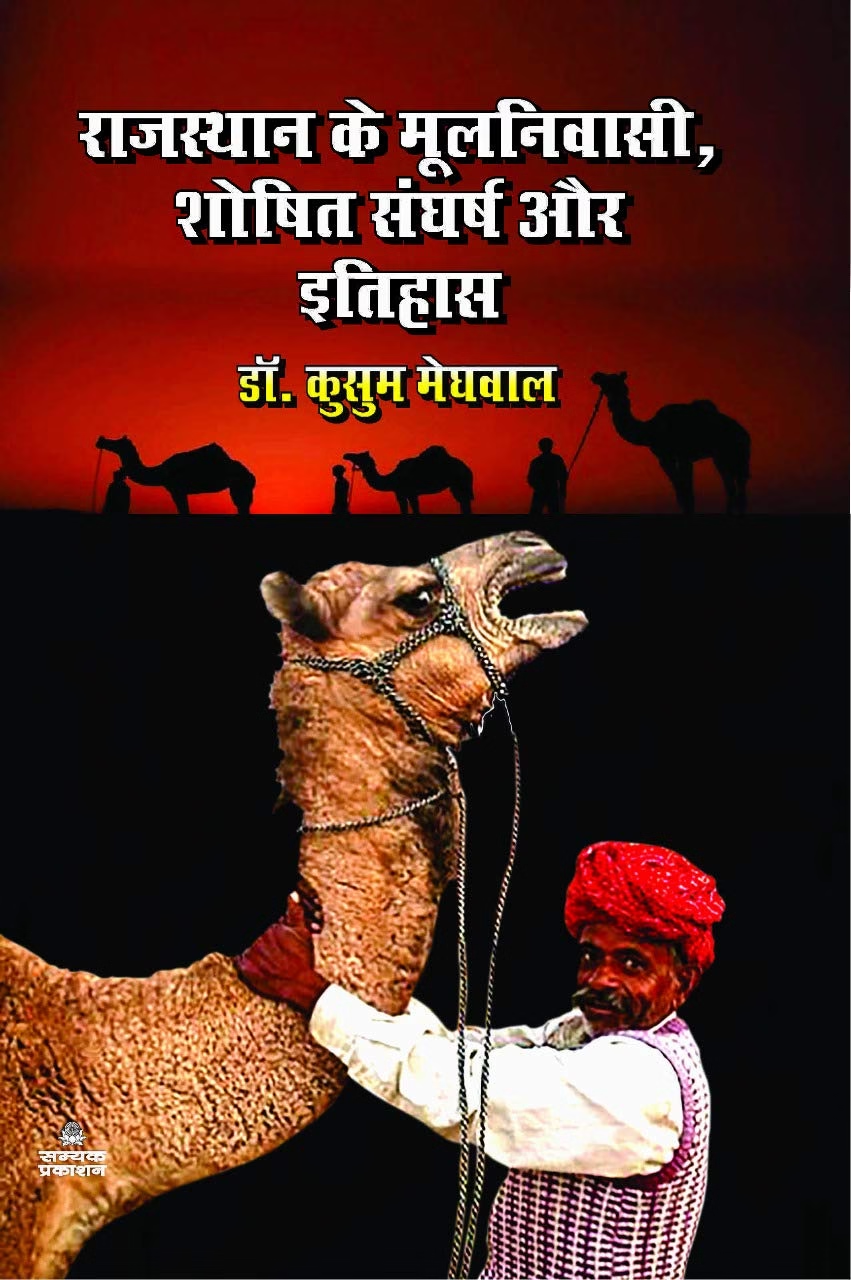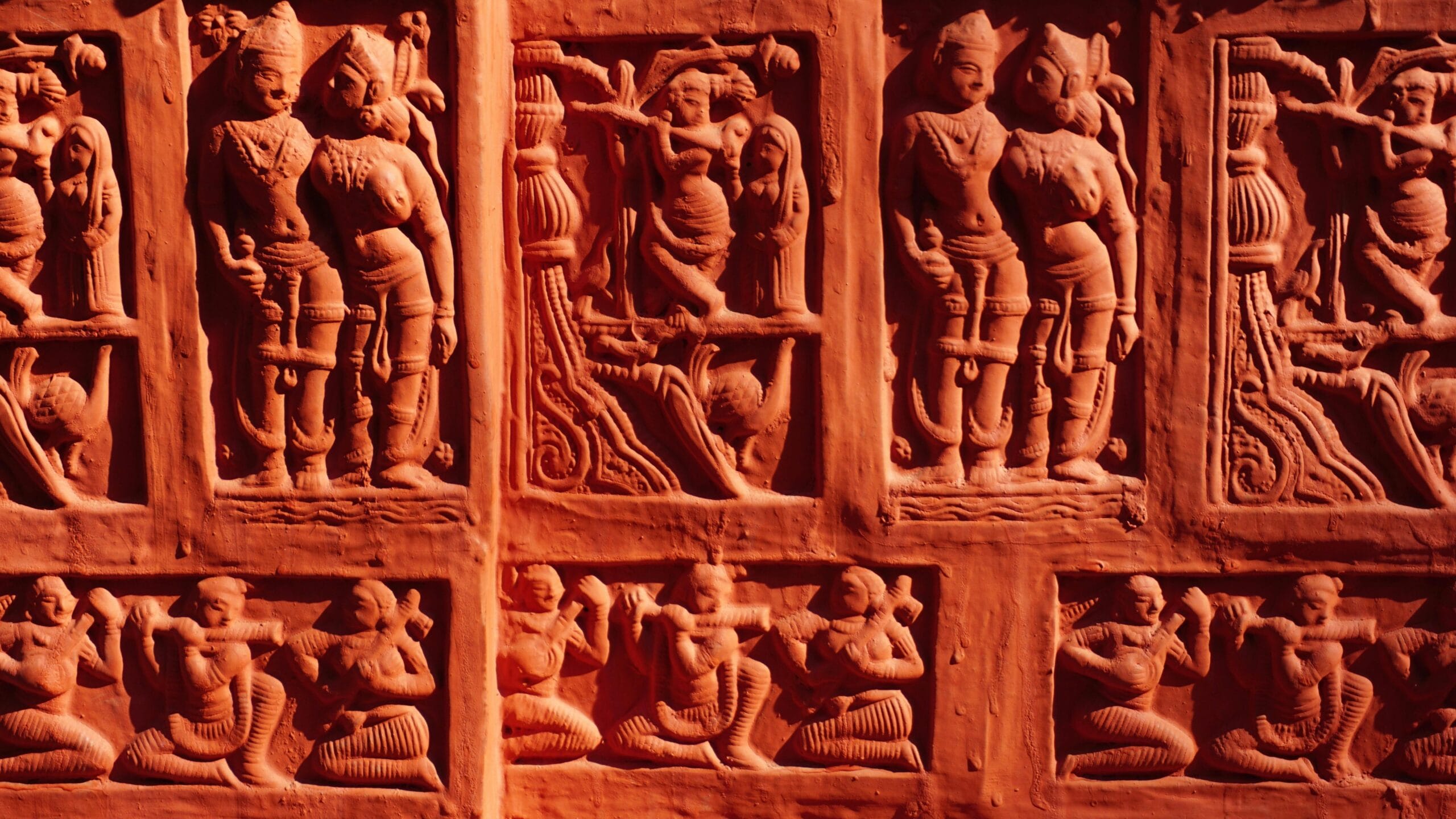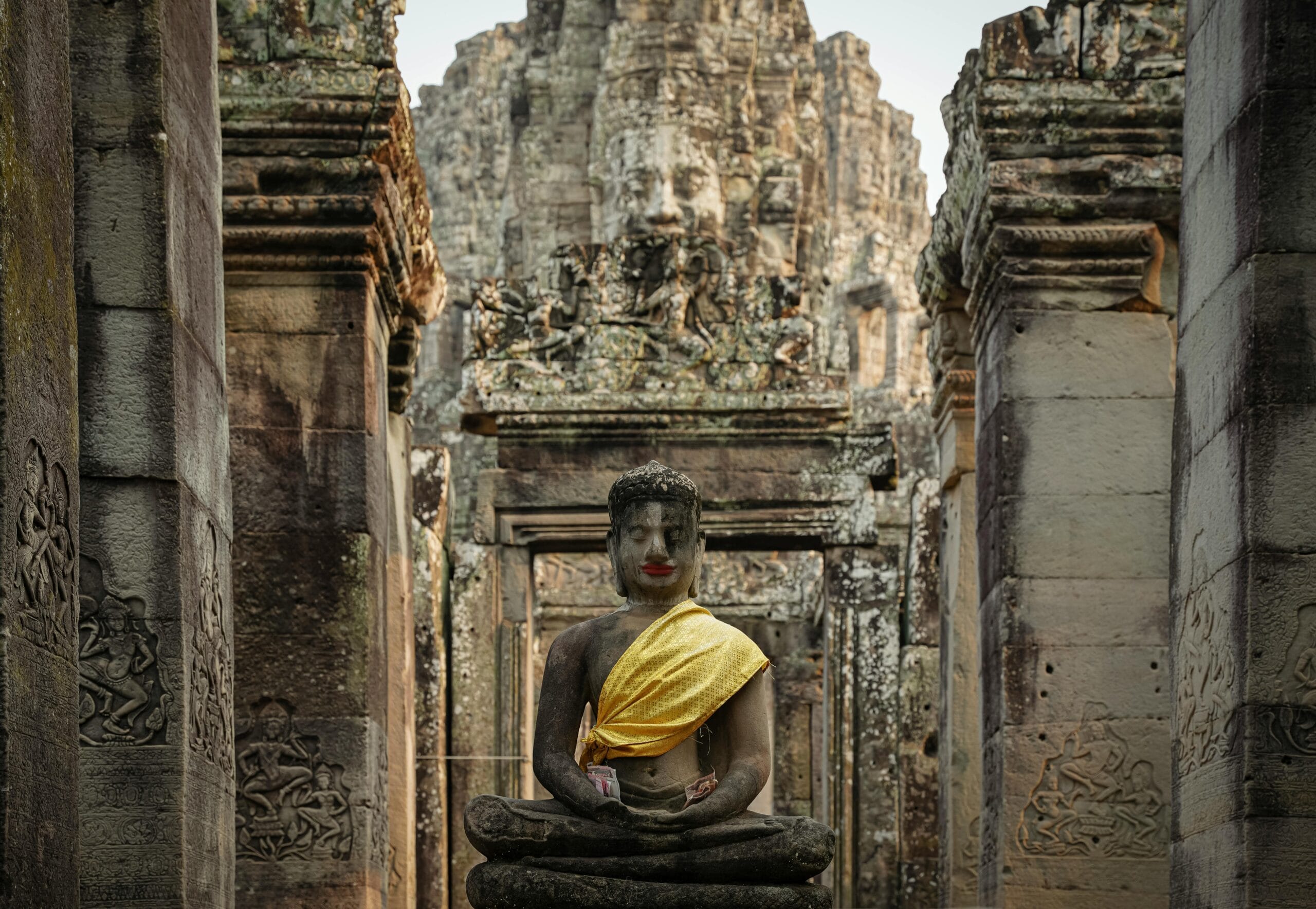Rajasthan, a region synonymous with vibrant culture and majestic forts, holds a history far more intricate than often portrayed. This article dives deep into the multifaceted past of Rajasthan, exploring the nuances often overlooked in mainstream narratives. We aim to provide a comprehensive perspective, drawing primarily from Dr. Kusum Meghwal’s book, “Rajasthan ke Mool Nivasi: Shoshit Sangharsh aur Itihas” (Rajasthan’s Original Inhabitants: Exploited Struggles and History), to shed light on the struggles and contributions of marginalized communities and offer a more balanced understanding of the region’s rich heritage. Let’s discuss the history of Rajasthan.

Table of Contents:
- The Making of Rajasthan: From Multiple Kingdoms to a Unified State
- What's in a Name? Exploring the Evolution of Rajasthan's Identity
- The Plight of the Marginalized: A Dark Chapter in History of Rajasthan
- Challenging the Narrative: Debunking Common Misconceptions
- The Buddhist Heritage of Rajasthan: A Forgotten Legacy
- Analyzing the Roots of Caste Discrimination: A Complex Interplay of Factors
- The Color of Rajasthan: Unmasking the Exploitation Behind the Vibrant Façade
- Ambedkar's Vision and the Path Forward: Towards a More Just Rajasthan
- What Can You Do?
The Making of Rajasthan: From Multiple Kingdoms to a Unified State
The journey to forming modern-day Rajasthan was a long and complex process. It wasn’t until India’s independence in 1947 that the region began to take its current shape. The formation of Rajasthan took place in five stages.



Matsya Union
The first step involved the creation of the Matsya Sangh on March 17, 1948, integrating princely states such as Alwar, Bharatpur, Dholpur and Karauli. This marked the initial consolidation of territories.
Rajasthan Union
The second union on March 25 1948, included states such as Kota, Tonk, Bundi and Jhalawar, including Partapgarh and Dungarpur.
Formation of Greater Rajasthan
By April 18, 1948, the third stage was reached integrating Udaipur along with Jaipur, Jodhpur Bikaner and Jaisalmer into Rajasthan. This created greater Rajasthan, which then Sardar Vallabhbhai Patel opened on March 30, 1949.
Integration of Matsya Union into Rajasthan
Lastly, the commission of the state on 1956 made it possible for territories like Ajmer and Abu to be integrated into Rajasthan. Then what resulted from it, was the making of Rajasthan.
What’s in a Name? Exploring the Evolution of Rajasthan’s Identity
The term “Rajasthan,” while widely accepted today, wasn’t always the region’s identifier. Dr. Meghwal highlights the various names used throughout history, each carrying its own implications.

Rajwara, Rajasthan, and Rajputana
These names evoke images of princely rule, dominance by specific clans (Rajputs), and a feudal social structure. They emphasize the power and legacy of the ruling class.
Samanti Rajasthan
This highlights the feudal nature of the region with different thakurs and jagirdars who considered themselves superior and had a history of exploiting others.
Rangila Rajasthan
This name describes both the vibrant aspect of tourism and the king’s colorful celebrations. However, Dr. Meghwal offers an alternative perspective, suggesting it also alludes to the extravagant lifestyles and रंगरेलियां (debauchery) of the rulers, potentially at the expense of their subjects.
The Plight of the Marginalized: A Dark Chapter in History of Rajasthan
While tales of valor and royalty dominate popular history, the stories of those who suffered under the system often remain untold. Dr. Meghwal brings to light the systemic oppression faced by Scheduled Castes (SCs), Scheduled Tribes (STs), and Other Backward Classes (OBCs) in Rajasthan:
Atrocities Against Lower Castes
News reports frequently highlight instances of violence and discrimination against SC and ST communities in Rajasthan, ranging from denial of access to water to murder for minor offenses.



Human Sacrifice and Forced Labor
The construction of forts, often celebrated as architectural marvels, involved brutal practices like burying people alive to ensure the structure’s longevity. Members of marginalized communities were sometimes forced into these sacrifices, highlighting their expendability in the eyes of the ruling elite.

Historical Suppression
Throughout history, lower castes were subdued and denied the fundamental resources. The exploitation and suppression of these groups is a stain on Rajasthan’s history.
Challenging the Narrative: Debunking Common Misconceptions
Dr. Meghwal’s book challenges several widely held beliefs about Rajasthan’s history and social structure:
The Myth of Rajput Origins
The notion of Rajputs as a distinct, indigenous group is questioned. Drawing upon historical texts and research, she argues that the Rajput identity emerged later, potentially as a consolidation of various groups, including those of foreign origin.

The Glorification of Rajput Valour
While Rajput bravery is often lauded, the book encourages a critical examination of their actions. Instances of internal conflict, abduction of women from other communities, and oppressive practices towards lower castes paint a more complex picture than simple heroism.
The Term “Mool Nivasi”
Dr. Meghwal clarifies her use of the term “Mool Nivasi” (original inhabitant), asserting that it encompasses all those who have historically resided in the region, regardless of their caste or perceived social status. She emphasizes the contributions and struggles of these communities, often marginalized in traditional narratives.


Referencing historical figures like Mahatma Jyotiba Phule and his book ‘Gulamgiri’, she highlights the long-standing use of the term to represent the rights and identities of the oppressed.
The Buddhist Heritage of Rajasthan: A Forgotten Legacy
Contrary to the common perception of Rajasthan as solely a land of Hindu kings, Dr. Meghwal presents compelling evidence of a significant Buddhist presence in the region’s past.







Archaeological findings and historical accounts point to a thriving Buddhist culture:
Ancient Buddhist Sites

Sites like Chittorgarh and the Hadoti region reveal numerous Buddhist relics, monasteries, and stupas, suggesting that Buddhism was a prominent religion in Rajasthan for centuries.
Maurya Influence
The association of certain forts with the Mauryan dynasty, known for their embrace of Buddhism, further strengthens the argument for a strong Buddhist past in Rajasthan.
Suppression of Buddhist History
Dr. Meghwal argues that the history of Buddhist communities in Rajasthan has been deliberately suppressed, replaced by narratives that emphasize the dominance of other religions and ruling dynasties.

Analyzing the Roots of Caste Discrimination: A Complex Interplay of Factors
The book explores the complex origins of caste discrimination in Rajasthan, going beyond simplistic explanations:
The Role of Brahmanical Texts
Dr. Meghwal argues that Brahmanical texts, like the Manusmriti, played a significant role in codifying and perpetuating the caste system, establishing a hierarchy that legitimized the oppression of certain groups.
The Impact of Shifting Power Dynamics
As power shifted between different rulers and communities, social hierarchies evolved, leading to the marginalization of certain groups and the consolidation of power among others.
The Erasure of Dalit Voices
Dr. Meghwal highlights the systematic suppression of Dalit voices and histories, contributing to a distorted understanding of the region’s past. It becomes clear that they were intentionally excluded to show the superiority of certain families.
The Color of Rajasthan: Unmasking the Exploitation Behind the Vibrant Façade
The name “Rangila Rajasthan” (Colorful Rajasthan) often evokes images of vibrant festivals, ornate attire, and rich cultural traditions. However, Dr. Meghwal unveils a darker side to this colorful facade:
Extravagance at the Expense of the Poor
The opulent lifestyles of the rulers, their elaborate palaces, and lavish entertainment were often funded by the exploitation and suffering of the common people.


The Objectification of Women


The book sheds light on the treatment of women in the royal courts, where they were often reduced to objects of pleasure and political pawns, their lives dictated by the whims of men in power.
A Culture of Violence and Oppression
The pursuit of power and pleasure often led to violence, both within the ruling class and against marginalized communities, further tarnishing the image of a vibrant and prosperous land.
Ambedkar’s Vision and the Path Forward: Towards a More Just Rajasthan
Dr. Meghwal emphasises the importance of Baba Saheb Ambedkar’s teachings in empowering the people of Rajasthan. She highlights the role of education and awareness in challenging oppressive social structures and promoting equality. The impact of Babasaheb Ambedkar is clear. He taught people about oppression and their rights in the nation.
Empowerment Through Education
Ambedkar’s emphasis on education as a tool for social upliftment is crucial for marginalized communities in Rajasthan to break free from the shackles of tradition and claim their rightful place in society.
Challenging Brahmanical Ideology
Dr. Meghwal stresses the need to critically examine and challenge Brahmanical ideologies that perpetuate caste discrimination and social inequality.
Promoting Social Justice and Equality
The book calls for a concerted effort to promote social justice and equality for all communities in Rajasthan, ensuring that everyone has the opportunity to thrive and contribute to the region’s progress.
What Can You Do?
Understanding the complex history of Rajasthan is the first step towards building a more just and equitable future. Here are some actions you can take:
- Educate Yourself: Read Dr. Kusum Meghwal’s book, “Rajasthan ke Mool Nivasi: Shoshit Sangharsh aur Itihas,” and other historical accounts that offer diverse perspectives on the region’s past.
- Support Marginalized Communities: Advocate for policies and initiatives that promote social justice and equality for SCs, STs, and OBCs in Rajasthan.
- Challenge Discrimination: Speak out against caste-based discrimination and prejudice in all its forms.
- Promote Inclusive Narratives: Share stories and perspectives of marginalized communities to ensure a more balanced and accurate representation of Rajasthan’s history.
- Engage in Dialogue: Foster open and honest conversations about caste, social justice, and the need for a more equitable society.
By acknowledging the complexities of Rajasthan’s history and working towards a more inclusive future, we can ensure that the region’s rich heritage truly benefits all its inhabitants.
Read the book yourself and find out more about the True history of Rajasthan.

Rajasthan, known as the land of warriors and forts, encompasses a complex socio-historical tapestry. Various tribal and indigenous communities have resided in this region since ancient times, often referred to as the “original inhabitants.” These primarily include tribes such as the Bhil, Meena, Sahariya, Garasia, and Damor, whose culture, traditions, and way of life are deeply intertwined with the spirit of this land.
However, historically, these original inhabitant communities have faced exploitation and marginalization. Over centuries, various political and social forces have encroached upon their land, resources, and rights. The feudal system and subsequent administrative structures often kept them socially and economically vulnerable.
Disclaimer:
Throughout this article, certain terms will be used with specific meanings within the historical and social context of Rajasthan:
- Rajput: Often associated with the ruling class, this term will be examined critically regarding its origins and implications for social hierarchy.
- Mool Nivasi: Refers to the original inhabitants of Rajasthan, encompassing diverse communities beyond the traditional ruling elites.
- Scheduled Castes (SC) and Scheduled Tribes (ST): Officially designated groups recognized by the Indian Constitution as historically disadvantaged and deserving of specific protections.
- Other Backward Classes (OBC): Another category recognized by the Indian government as socially and educationally disadvantaged.
Read more about the true history of Ayodhya.
Find out more about the Truth of Mathura.
Do you disagree with this article? If you have strong evidence to back up your claims, we invite you to join our live debates every Sunday, Tuesday, and Thursday on YouTube. Let’s engage in a respectful, evidence-based discussion to uncover the truth. Watch the latest debate on this topic below and share your perspective!

